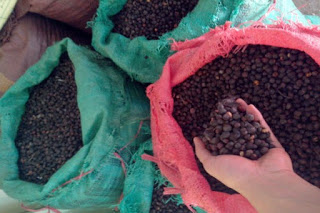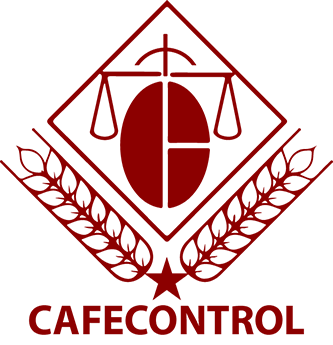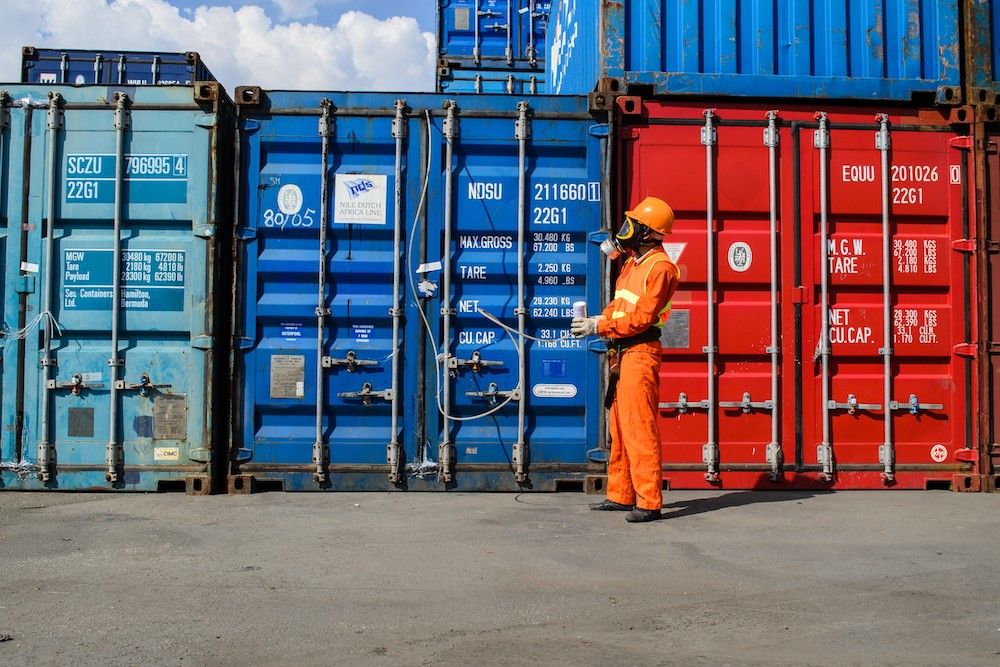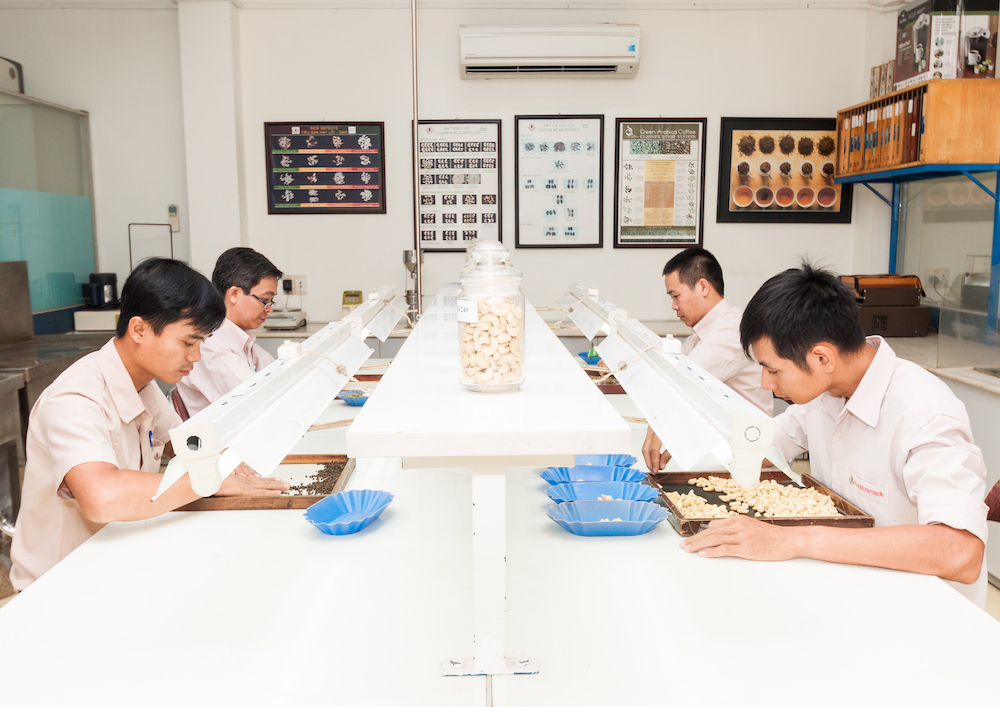Vietnam’s coffee industry has experienced a sad year for both farmers and businesses when the exports fell sharply in both volume and price. Will the upcoming 2016 bring brighter days for coffee growers and traders?

Dried green coffee of a farmer in Dak Lak is stored in his house waiting to be sold – Photo: NH.
From the end of 2014, the price of coffee on the world market began to decline. Responding to the signal of a down price, Vietnamese farmers decided to keep coffee to wait for the price to rise. But prices did not rebound and coffee farmers suffered double losses in both price and volume. Although demand has exceeded supply for the second year in a row on the world market, the exchange rate factors and high inventories in both exporting and importing countries have maintained coffee prices at low levels.
Looking back on a sad 2015
By the end of November 2015, according to the General Department of Vietnam Customs, Vietnam had exported 1.03 million tons of coffee, equivalent to 2.08 billion USD, decreased by 23% in volume and 28% in value over the same period of 2014. The exports decreased in both volume and value across most of the major import markets: Germany (-31% in volume and -36% in value), the US (-15% in volume and -21% in value), Spain (-6% in volume and -9% in value), Israel (-18% in volume and -23% in value), Belgium (-44% in volume and -48% in value) (see also: a depressful crop year of coffee 2014-2015).
Most of the export turnover to the above markets decreased compared to the average of the same period in the period 2010-2014. Some major export markets are still growing compared to the average in the period 2010-2014, including: Spain, Israel, Japan, Russia, Algeria and Thailand.
Meanwhile, in the 2014/15 crop year, although coffee production in Brazil and Indonesia decreased for the third year in a row, the currencies of these countries depreciated strongly against the US dollar, together with the production increased for the third year in a row in Colombia and Ethiopia, bringing to the world market an abundant source of cheap coffee. El Nino has a negative impact on major coffee producing countries: Brazil is strongly affected and continues to reduce production; while production increased in Colombia thanks to favorable weather and the positive effects of the country’s coffee replanting program.
At the same time, from the beginning of 2014 until now, the Brazilian real and the Colombian peso have depreciated by 37% and 40% against the US dollar, respectively, so the coffee exporters of these two countries have massively sold coffee to the world market. Meanwhile, the Vietnam dong is pegged to the US dollar in a narrow band, so it is difficult for Vietnamese coffee to compete on price not only in the US market but especially in major import markets where the currency depreciates compared to the US dollars such as EU, Japan and Korea.
Will 2016 be brighter?
A new year often brings hopes such as wishing the new year better than the old one. Major agricultural organizations and financial institutions around the world believe that the coffee market in 2016 will have slight improvements compared to 2015.
The increased demand is the most significant factor that will support coffee prices in 2016, especially in emerging markets (Algieri, Australia, Russia, Korea, Turkey, Ukraine) and major coffee exporting countries (ICO, November 2015). In traditional markets, EU coffee imports in 2016 are expected to increase by 400,000 bags, reaching a record level of 45.5 million bags; US imports are also forecast to increase by 500,000 bags to 24,000 bags. The coffee inventories at the end of 2016 of the EU and the US are expected to remain unchanged compared to 2015, at 12.5 million bags and 6.1 million bags, respectively (USDA, December 2015).
In 2015, the demand outstripped supply for two consecutive years, with an annual growth rate of 2.4% in the period 2011-2015 and the coffee export and consumption in 2016 is expected to reach a record level, causing the world coffee inventories decreases to 36.7 million bags.
However, the coffee supply in 2016 is expected to increase in Colombia, Indonesia, and Vietnam, which will be enough to offset the decrease in output in Brazil, so it will continue to hold coffee prices. The Brazilian real and the Colombian peso remain at very low levels, which will continue to be a big pressure on coffee prices. The IMF forecasts that the price of robusta coffee (**) in the first quarter of 2016 will drop to 69.7 US cents/pound before gradually increasing towards the end of the year. Commerzbank forecasts that in the first three months of 2016, the price of Arabica coffee will reach 130 cents/lb and Robusta coffee will reach $1,600/ton, decreases from $1,750/ton in the bank’s forecast in October.
Thus, before there are new signals, the coffee market is expected to continue to remain at a low price level in the next few months, although the coffee market in 2016 is expected to improve compared to 2015.
Phạm Thị Kim Dung – IPSARD (*)/ thesaigontimes.vn
(*) The individual’s analytical views do not represent the views of the Institute of Policy and Strategy, Ministry of Agriculture and Rural Development
(**) Robusta coffee price in IMF forecast is the spot price of Robusta coffee on the New York market. Standard Uganda Robusta and Ivory Coast Grade 2.








